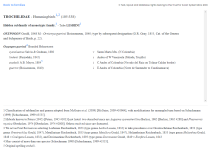Jacana
Will Jones

Brian M Myers, Kevin J Burns, Christopher J Clark, Alan Brelsford, Sampling affects population genetic inference: A case study of the Allen’s (Selasphorus sasin) and rufous hummingbird (Selasphorus rufus), Journal of Heredity, Volume 114, Issue 6, December 2023, Pages 625–636, doi.org/10.1093/jhered/esad044
Gene flow can affect evolutionary inference when species are undersampled. Here, we evaluate the effects of gene flow and geographic sampling on demographic inference of 2 hummingbirds that hybridize, Allen’s hummingbird (Selasphorus sasin) and rufous hummingbird (Selasphorus rufus). Using whole-genome data and extensive geographic sampling, we find widespread connectivity, with introgression far beyond the Allen’s × rufous hybrid zone, although the Z chromosome resists introgression beyond the hybrid zone. We test alternative hypotheses of speciation history of Allen’s, rufous, and Calliope (S. calliope) hummingbird and find that rufous hummingbird is the sister taxon to Allen’s hummingbird, and Calliope hummingbird is the outgroup. A model treating the 2 subspecies of Allen’s hummingbird as a single panmictic population fit observed genetic data better than models treating the subspecies as distinct populations, in contrast to morphological and behavioral differences and analyses of spatial population structure. With additional sampling, our study builds upon recent studies that came to conflicting conclusions regarding the evolutionary histories of these 2 species. Our results stress the importance of thorough geographic sampling when assessing demographic history in the presence of gene flow.
Gene flow can affect evolutionary inference when species are undersampled. Here, we evaluate the effects of gene flow and geographic sampling on demographic inference of 2 hummingbirds that hybridize, Allen’s hummingbird (Selasphorus sasin) and rufous hummingbird (Selasphorus rufus). Using whole-genome data and extensive geographic sampling, we find widespread connectivity, with introgression far beyond the Allen’s × rufous hybrid zone, although the Z chromosome resists introgression beyond the hybrid zone. We test alternative hypotheses of speciation history of Allen’s, rufous, and Calliope (S. calliope) hummingbird and find that rufous hummingbird is the sister taxon to Allen’s hummingbird, and Calliope hummingbird is the outgroup. A model treating the 2 subspecies of Allen’s hummingbird as a single panmictic population fit observed genetic data better than models treating the subspecies as distinct populations, in contrast to morphological and behavioral differences and analyses of spatial population structure. With additional sampling, our study builds upon recent studies that came to conflicting conclusions regarding the evolutionary histories of these 2 species. Our results stress the importance of thorough geographic sampling when assessing demographic history in the presence of gene flow.












